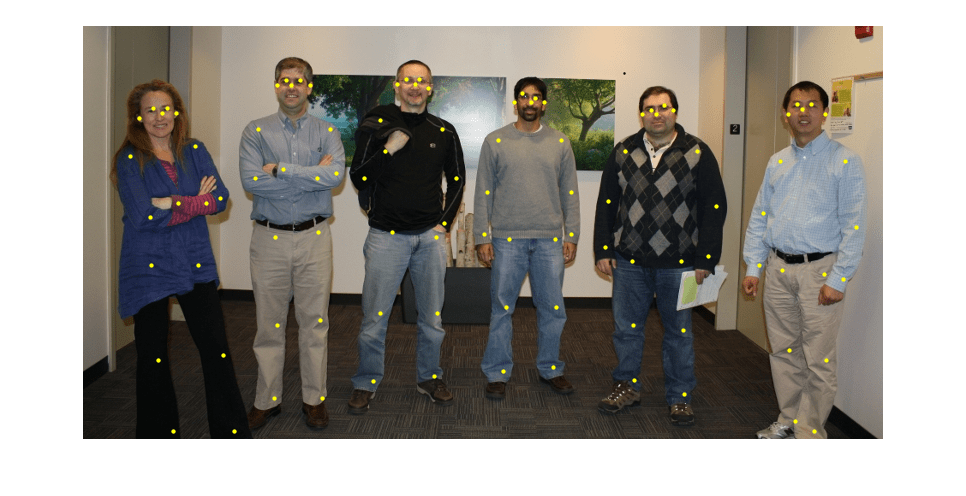hrnetObjectKeypointDetector
Description
The hrnetObjectKeypointDetector object creates a high
resolution deep learning network (HRNet) object keypoint detector for detecting object
keypoints in an image. Using this object, you can:
Create a pretrained HRNet object keypoint detector by using HRNet deep learning networks trained on the COCO keypoint detection data set.
Create a custom HRNet object keypoint detector by using a pretrained HRNet deep learning network.
Creation
Syntax
Description
Pretrained HRNet Object Keypoint Detector
detector = hrnetObjectKeypointDetector
Custom HRNet Object Keypoint Detector
detector = hrnetObjectKeypointDetector(name,keypointClassNames)
detector = hrnetObjectKeypointDetector(name,keypointClassNames,Name=Value)ModelName,
InputSize,
KeypointConnections and
Threshold properties
of the object keypoint detector using one or more name-value arguments.
Example:
hrnetObjectKeypointDetector(name,keypointClassNames,ModelName="customDetector")
sets the name for the object detector to "customDetector".
Note
This functionality requires Deep Learning Toolbox™ and the Computer Vision Toolbox™ Model for Object Keypoint Detection. You can download and install the Computer Vision Toolbox Model for Object Keypoint Detection from Add-On Explorer. For more information about installing add-ons, see Get and Manage Add-Ons.
Input Arguments
Properties
Object Functions
detect | Detect object keypoints using HRNet object keypoint detector |
visibleKeypoints | Extract visible keypoints from keypoints detected by HRNet object keypoint detector |
